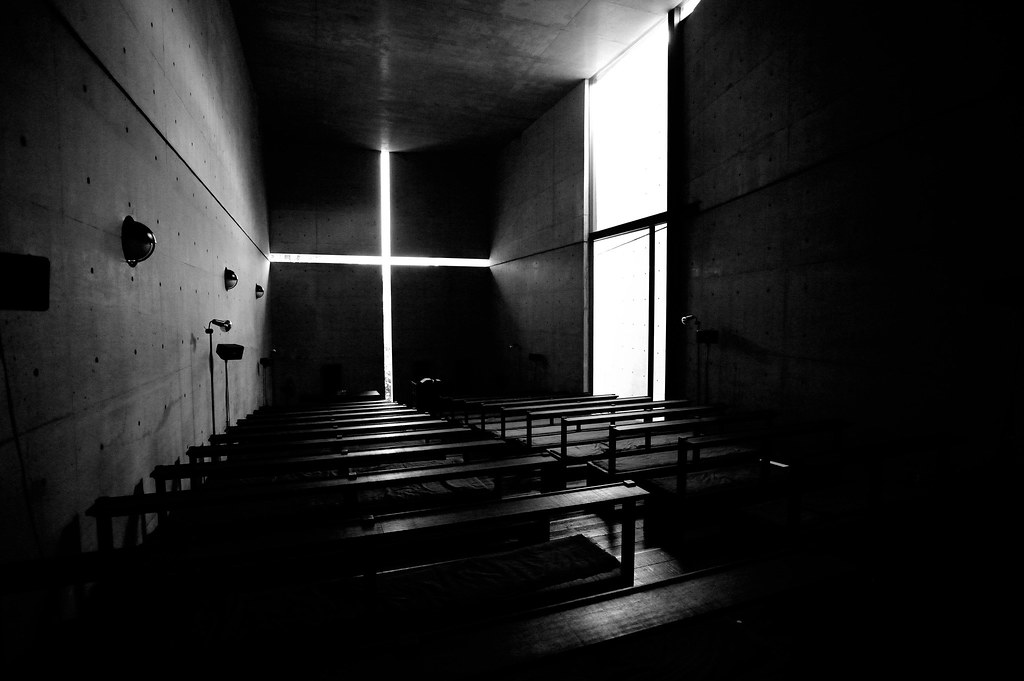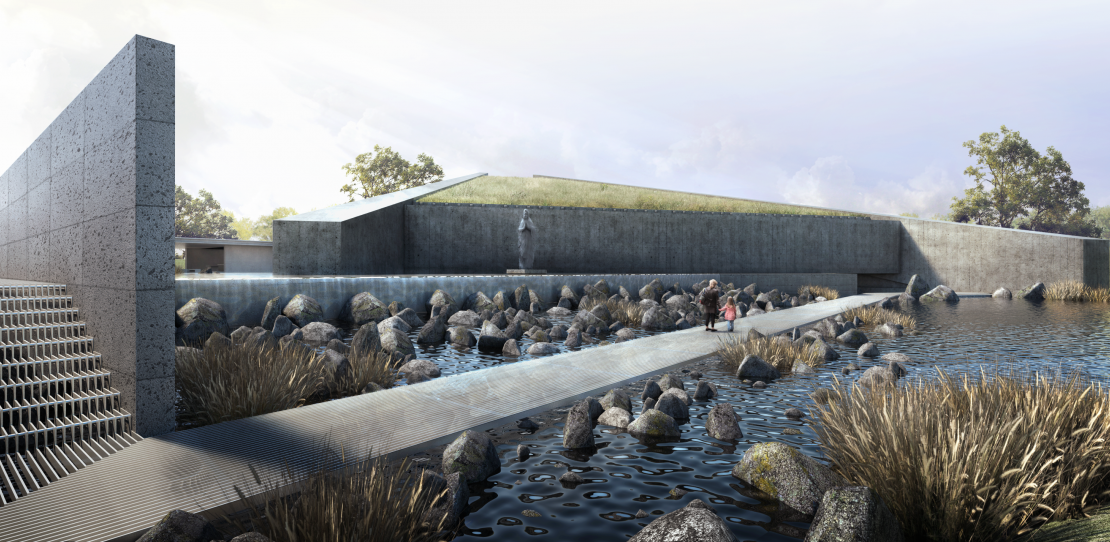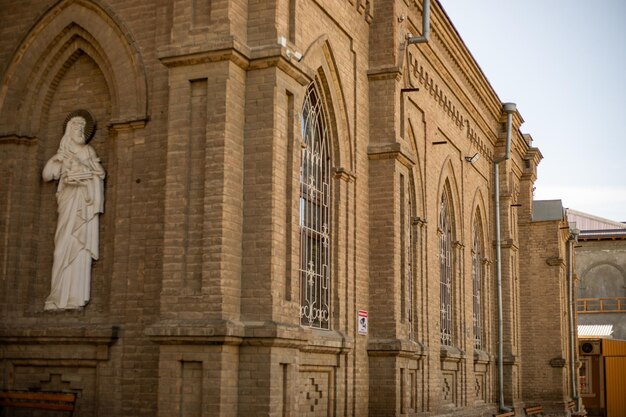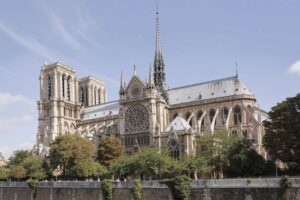In architectural history, Gothic and Brutalism are frequently seen as very different styles. On one side, we have the grand, exquisite beauty of medieval stone, which shows off delicate tracery and divine light. On the other hand, there are the huge, often-mocked concrete blocks from the middle of the 20th century.
But if you look attentively at the sacred buildings in Asia, you’ll find something amazing.
The Brutalist churches, chapels, and shrines seen in Japan, the Philippines, India, and Bangladesh are not a big change from the Gothic style. They are the style’s most true spiritual descendants, nevertheless. They are the Brutal Truth of the Vertical: the Gothic search for honesty in structure and spiritual height continues, but now in the language of raw, modern concrete.
This is a deep dive into why these huge, powerful buildings are becoming the most popular architectural icons of the 21st century. They are part of a conversation that has been going on for hundreds of years about light, mass, and God.
The Misunderstood Kinship: Structure as Decoration
The main idea behind the Gothic style was simple: show off the building. The rib vaults, flying buttresses, and pointed arches were not only embellishments stuck on the surface. They were the skeleton that was exposed and worked to make the skyscraper reach heights that were impossible and turn the walls into glass. The structure was the decoration.
Brutalism, which comes from the French word béton brut (raw concrete), follows this same philosophical rule.
When Le Corbusier employed board-formed concrete, which left the wood grain on the surface, he wanted the material to be real and honest. He invented a new form of honesty that praised the inexpensive, easy-to-find, and strong materials that were available after the war.
In Asian Brutalist cathedrals, the stark, geometric concrete slab becomes the new “stone,” showing off its materiality and not needing any decorative camouflage. The exposed beams and cantilevered shapes are not merely structural parts; they are the modern, monolithic version of the Gothic skeleton. This honesty really strikes a chord in the digital age, where the search for “authenticity” in design has become a major topic of conversation in architecture.
The Search for Divine Light: Tadao Ando
The only thing the Gothic cathedral wanted to do was turn light into a holy, intangible presence. The huge stained-glass windows let in a lot of color, making the inside feel like heaven.
No one in Asia caught this spiritual journey in concrete better than the Japanese maestro Tadao Ando.
Ando’s churches, especially the world-famous Church of the Light in Ibaraki, Japan, are the best examples of how to regulate light in a Gothic style. Ando doesn’t fill walls with glass; instead, he carves the light out of the concrete mass itself. His design is a stark, plain concrete cube with only one spectacular cross-shaped opening.

Church of the Light in Ibaraki, Japan
This is the opposite of stained glass. Gothic wanted brilliant, colorful light, but Ando exploits the thickness and shade of the concrete to turn the light into a pure, high-contrast spiritual essence. The outcome is equally dramatic, awe-inspiring, and devotional. The light is focused, crisp, and purposeful; it makes the building’s heaviest material a strong vessel for the ethereal and the sublime. This kind of simple spiritual drama is always a source of inspiration and a lot of search traffic for architectural writers and fans.

Tadao Ando Japanese architect
Tropical Brutalism: The Philippines’ New Boldness in Architecture
The Gothic style was necessary for the weather in northern Europe. Brutalism also had an important, climate-based purpose in Asia, especially in tropical areas. Leandro Locsin, a Filipino National Artist for Architecture, is the best example of this.
Locsin, a master of a style known as “Tropical Brutalism,” used huge, structural concrete shapes to deal with the problems caused by the Asian climate, such as excessive heat, heavy rain, and earthquakes.
The “floating mass” idea is something he uses a lot in his designs. He made naturally cool, shaded spaces under the main structure by putting massive concrete buildings on smaller, set-back pedestals or using spectacular cantilevered roofs. This is similar to a modern, heavy-duty version of the Gothic roofline and cloister.
Locsin’s Parish of the Holy Sacrifice (which is frequently called “Modernist” but uses Corbusier-like raw concrete techniques) has a pioneering thin-shell concrete dome. This new way of building made it possible to have a huge, high ceiling while using less material. This is similar to how the original Gothic rib vaults used daring materials and structures. These Asian churches use concrete to make cool, shaded interiors that are like the calm and stable temperatures inside a thousand-year-old stone cathedral. They are great examples of architecture that responds to the climate.

Leandro Locsin
Monumental Mystique: The Sublime, Ruin, and Geometry
Finally, the Brutalist churches in Asia have the same sense of awe, fear, and grandeur that makes millions of people want to see Notre Dame or Cologne Cathedral.
The Church of Seed, which sits on Luofu Mountain in China, was created by O Studio Architects. It is an angular, closed cage of raw concrete on top of a mountain that is meant to help people think deeply about themselves. Its harsh shape and remote location give it an old, meditative power.

Church of Seed /Designed by O Studio Architects/Project Architect: Guangzhou Architectural Engineering Design Institute/Structure Consultant: Guangzhou Architectural Engineering Design Institute
The Sunken Shrine of Cabetican in the Philippines: After Mount Pinatubo erupted in 1991, lahar (volcanic mudflow) partially buried this church. Today, only the upper third of the structure is still open to the public. To go inside, visitors have to go down a dug entrance. Its half-buried status has made it a strong, almost post-apocalyptic ruin. It has the grandeur and mystery of a medieval site taken back by nature, which makes it a very popular topic on social media and a must-see for people who love dark tourism and architecture.

The Sunken Shrine of Our Lady of Lourdes of Cabetican
The shapes of these buildings are really interesting because they seem old, permanent, and resistant to time, which are all things we think of when we think of Gothic architecture.
The Concrete Torch Is The Conclusion
The “Brutalist Churches in Asia” subject is gaining popularity since these buildings are not architectural failures; they are structural and spiritual successes. They bravely carry the two most important things from the Gothic era:
The truthful display of structural boldness.
The use of light and shadow to create a sublime impression.
From Tadao Ando’s simple, light-filled cubes in Japan to Leandro Locsin’s tall, concrete shells in the tropics, Asia’s concrete cathedrals are like living monuments. They show that when structure is employed on purpose and material is used honestly, adornment is not needed. They are the real, though harsh, offspring of the great vertical masters.
Reference:
Did You Know Jakarta Cathedral Is Southeast Asia’s Neo-Gothic Catholic Gem?
Construction of Gothic cathedrals – Wikipedia
For more blogs like this CLICK HERE!!





